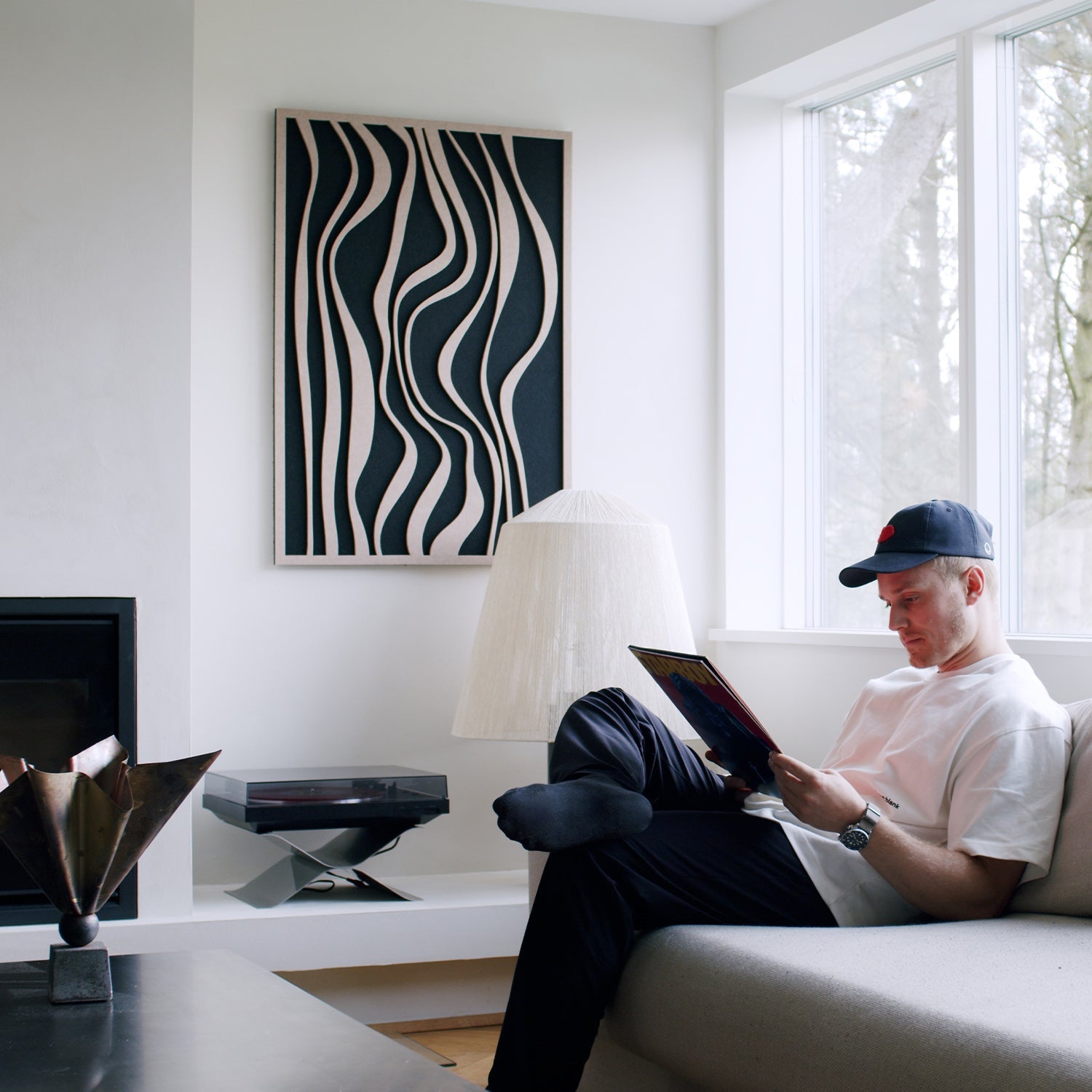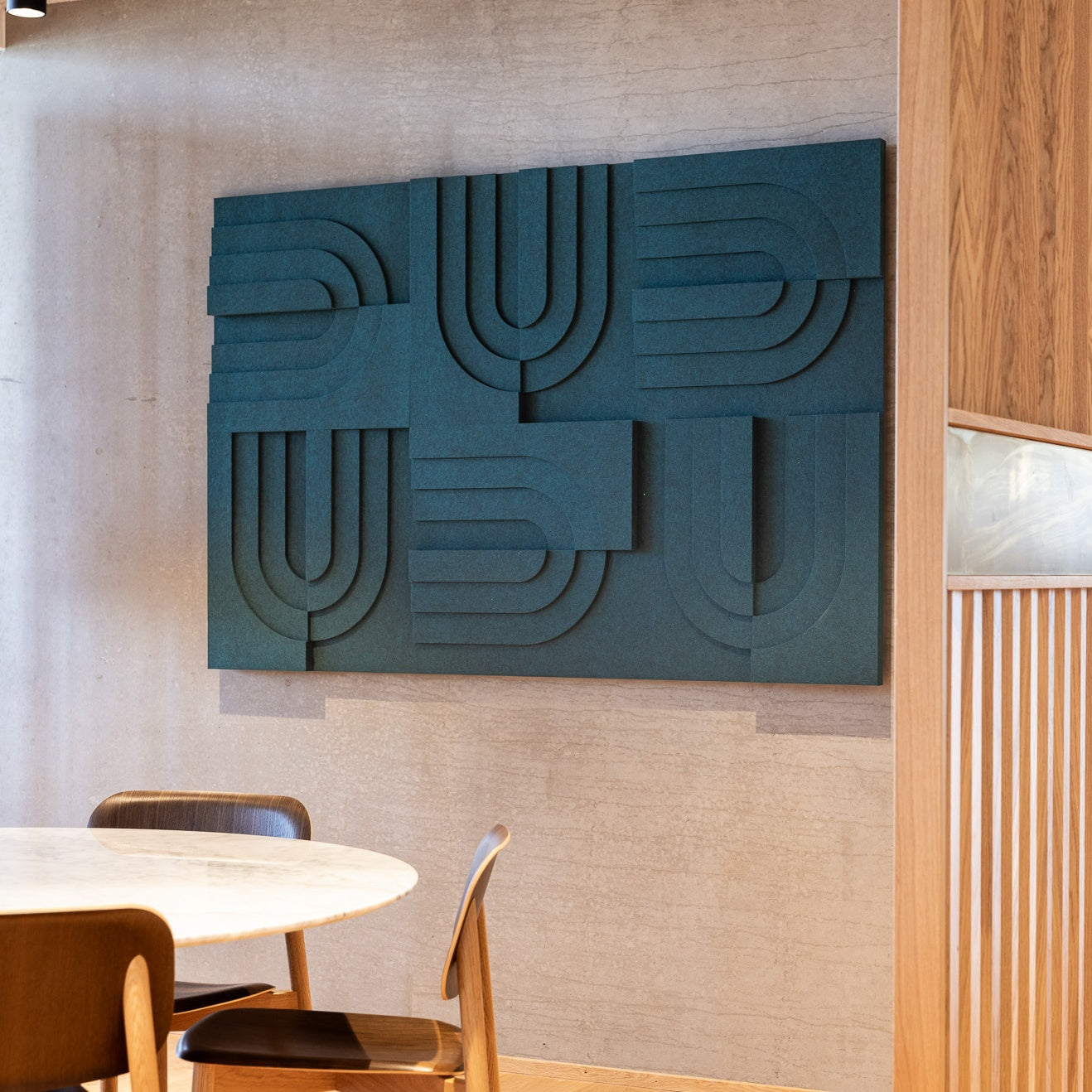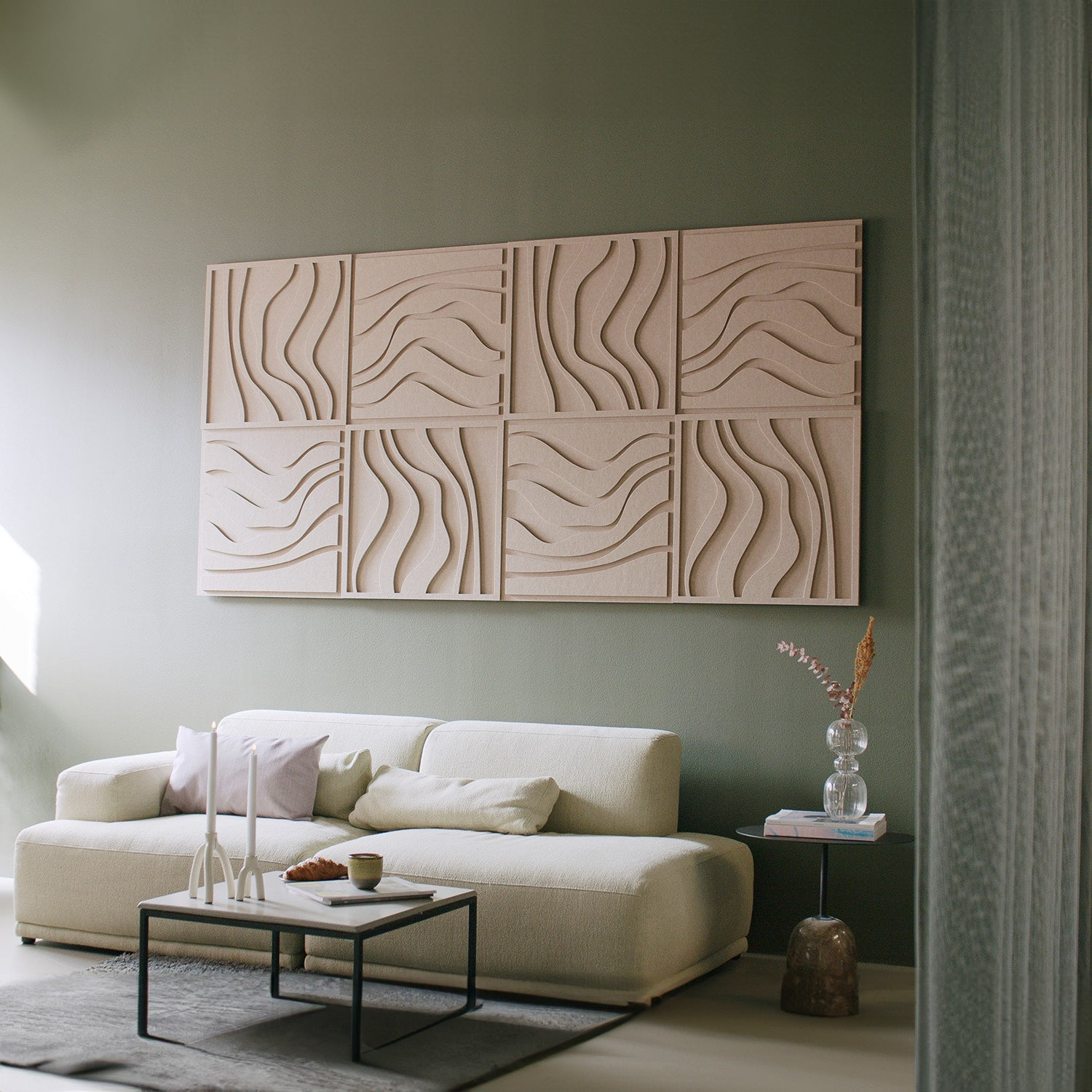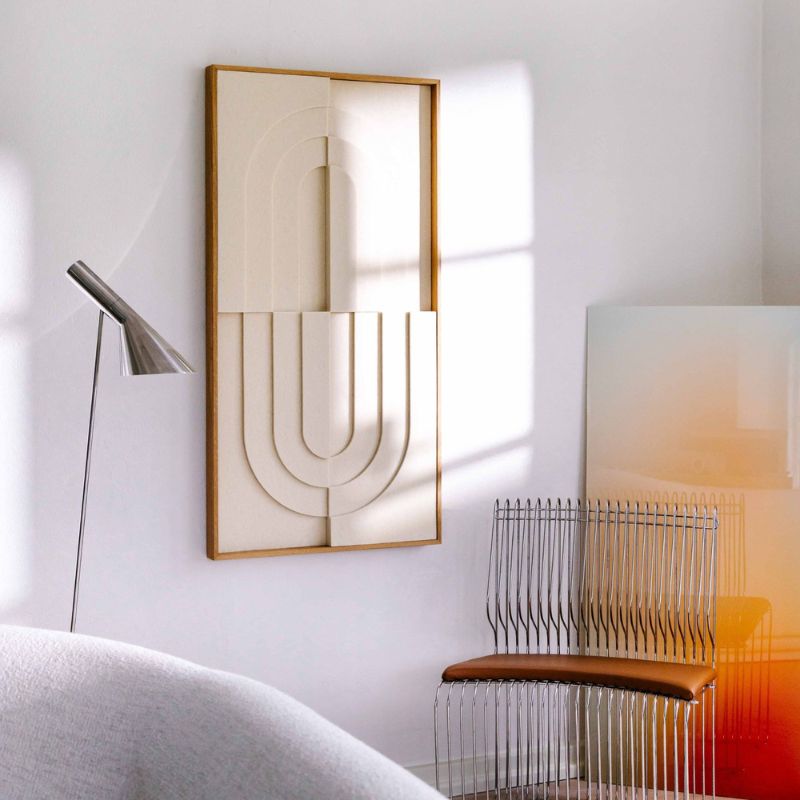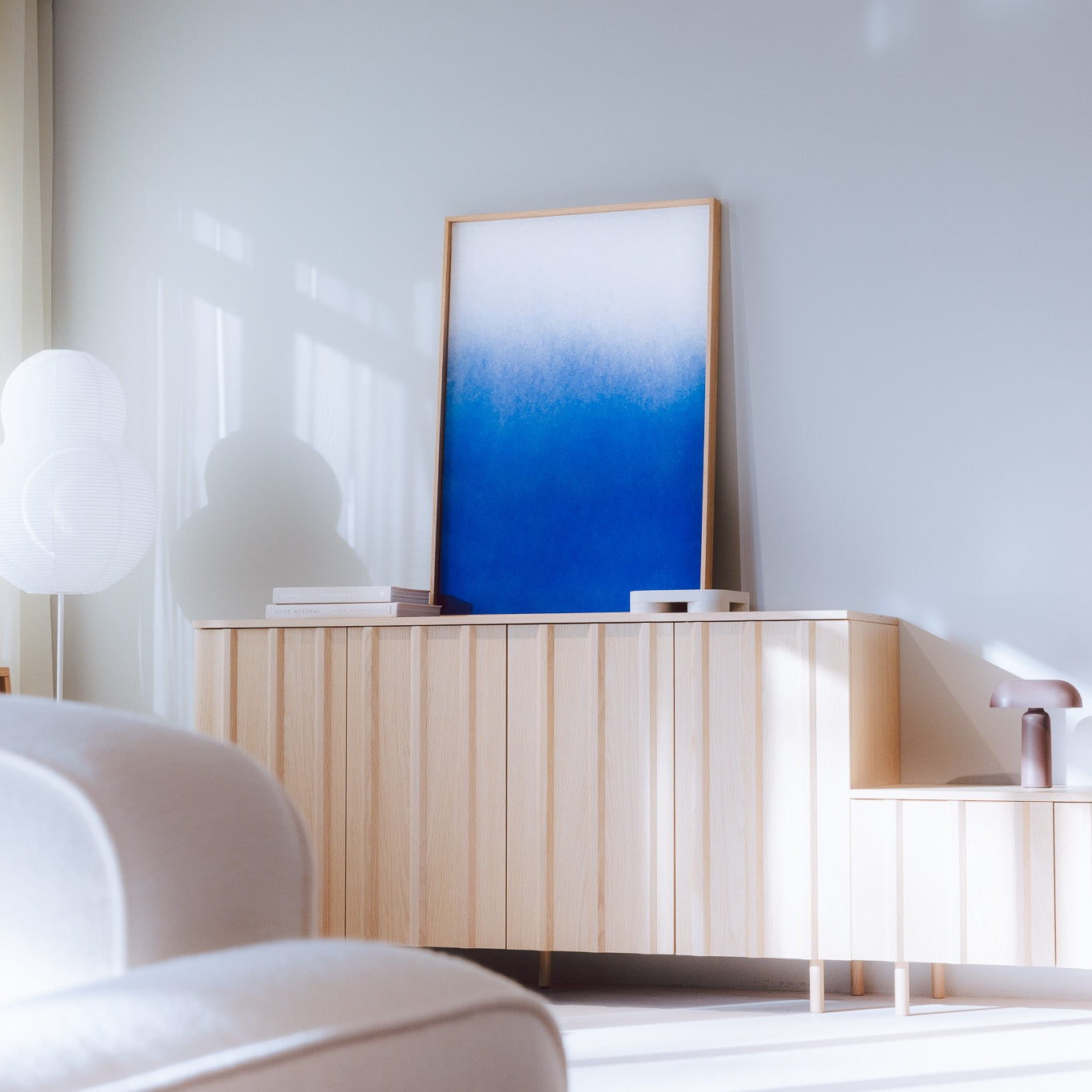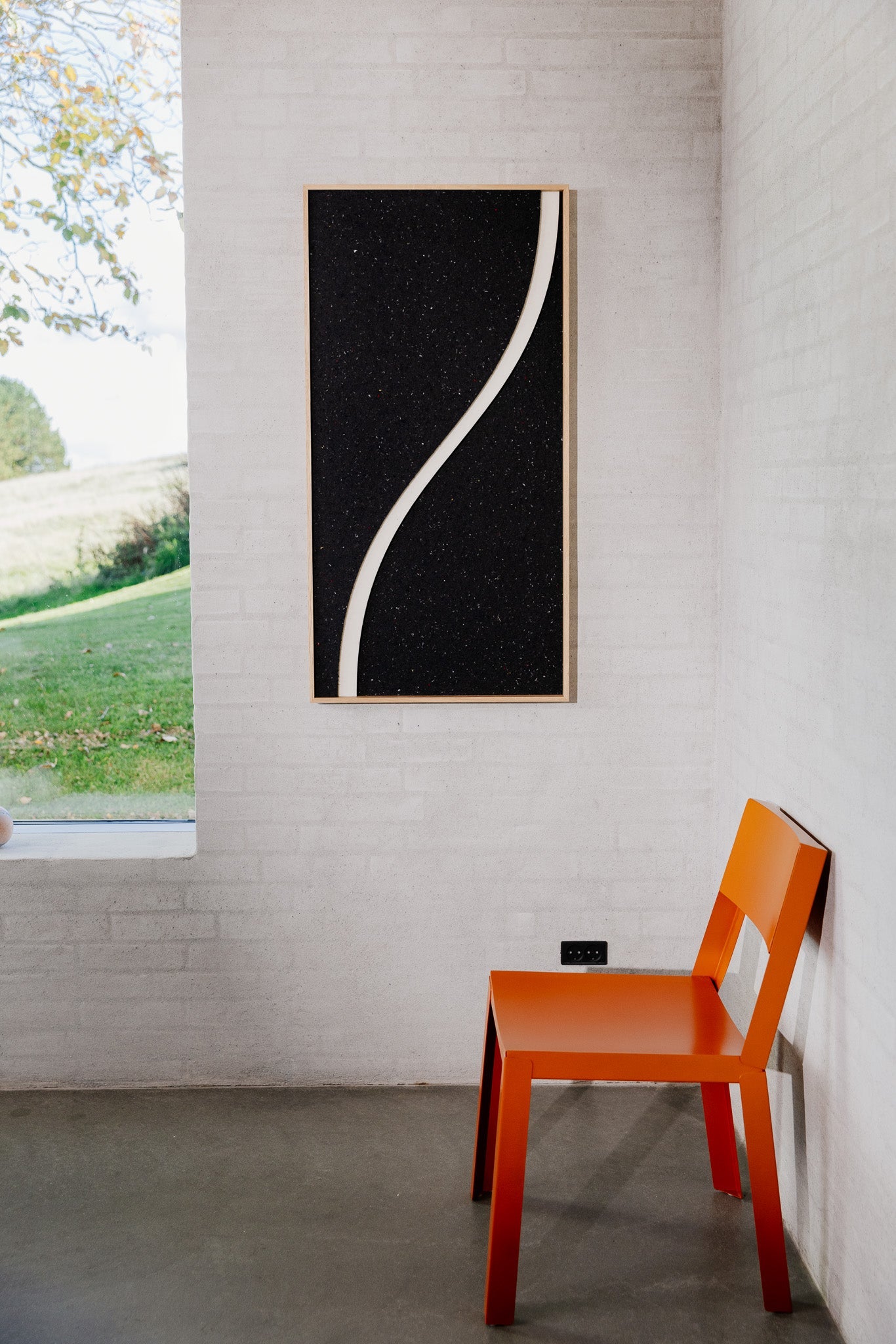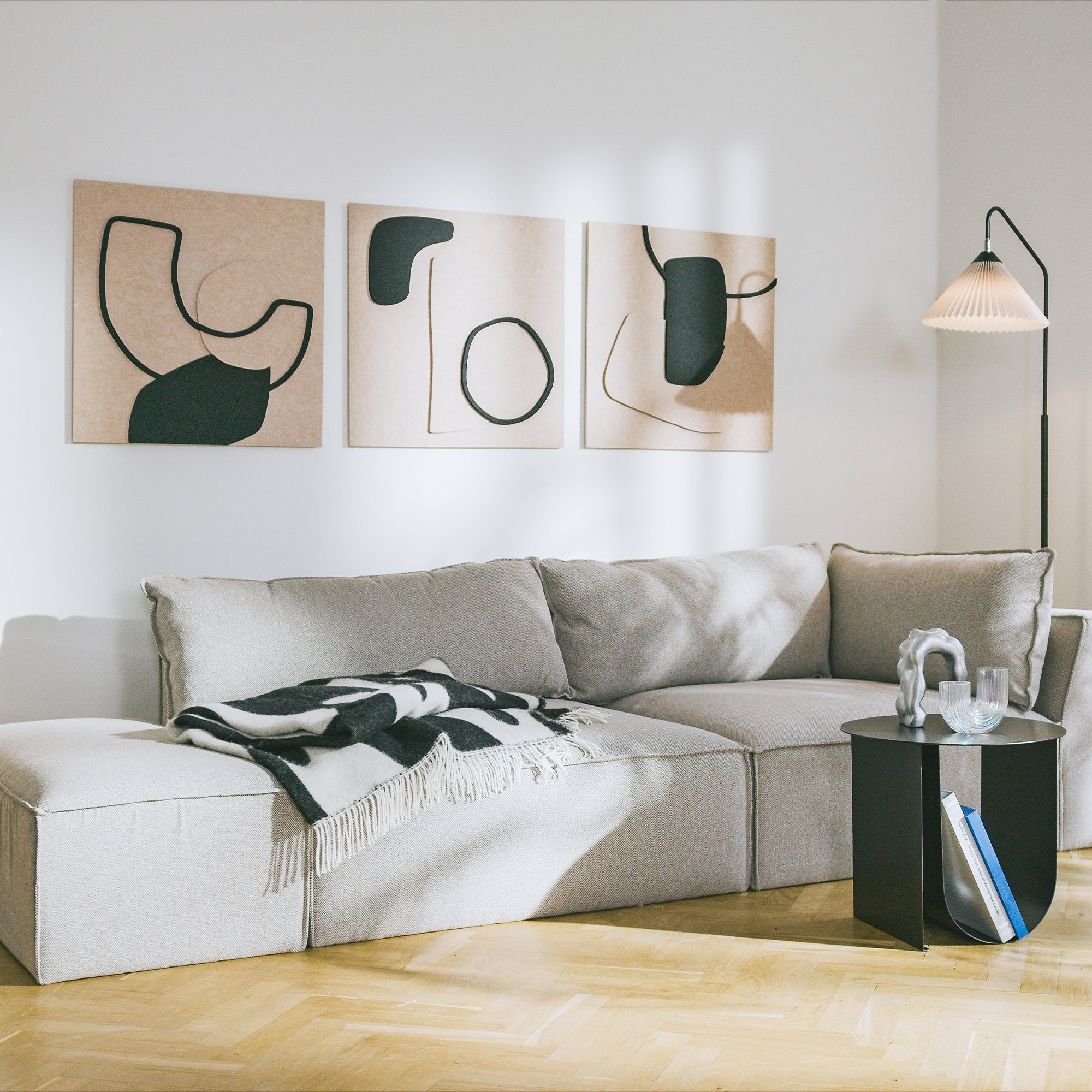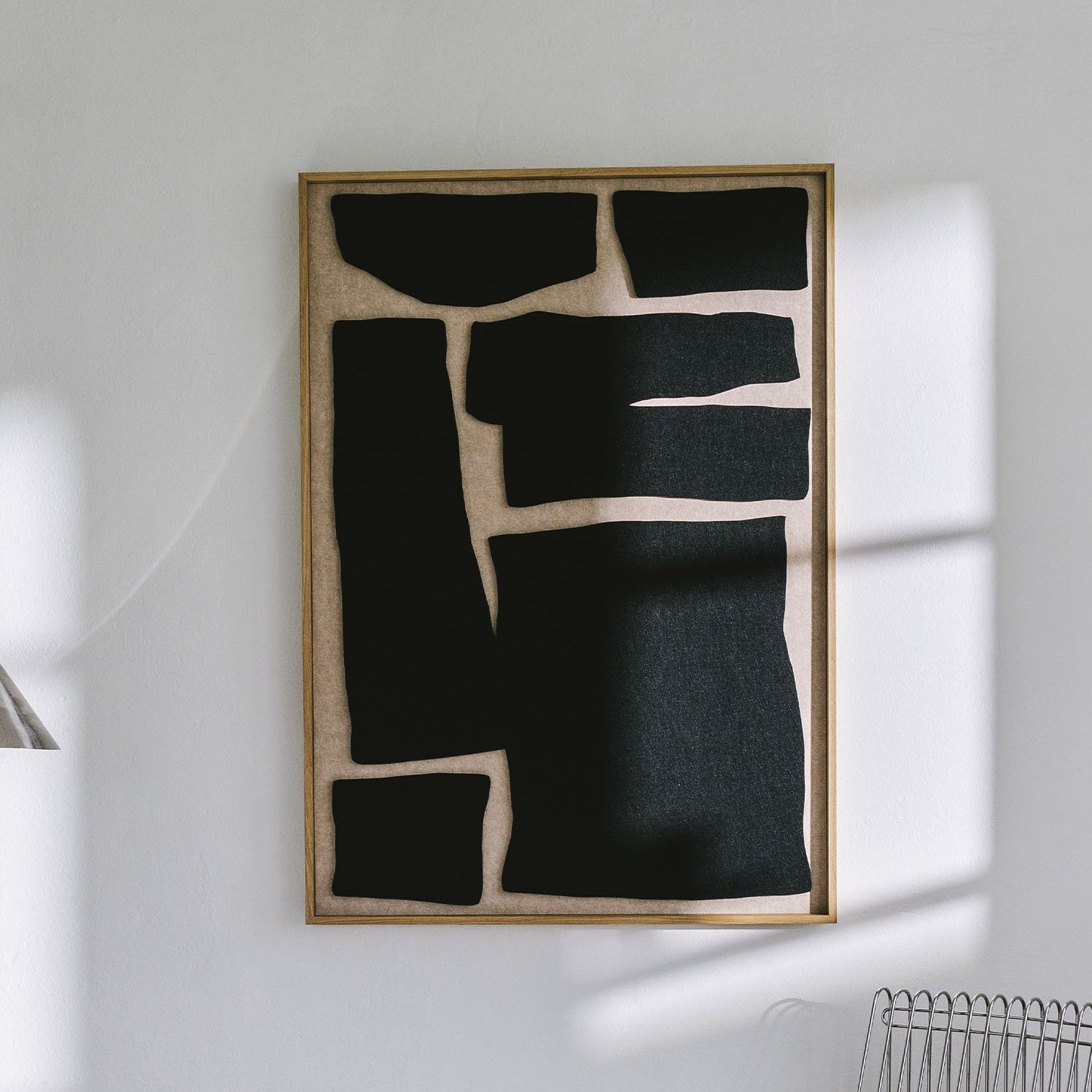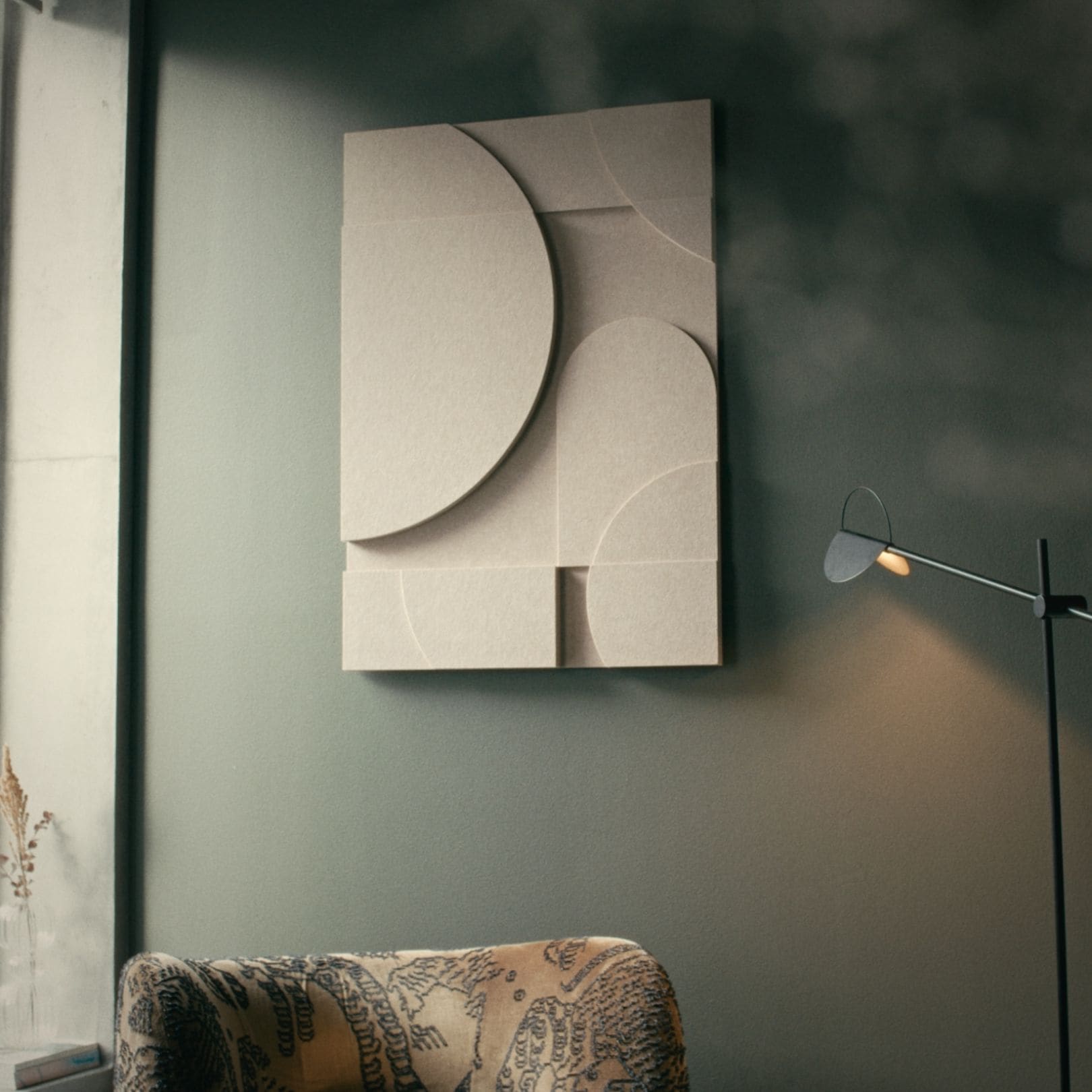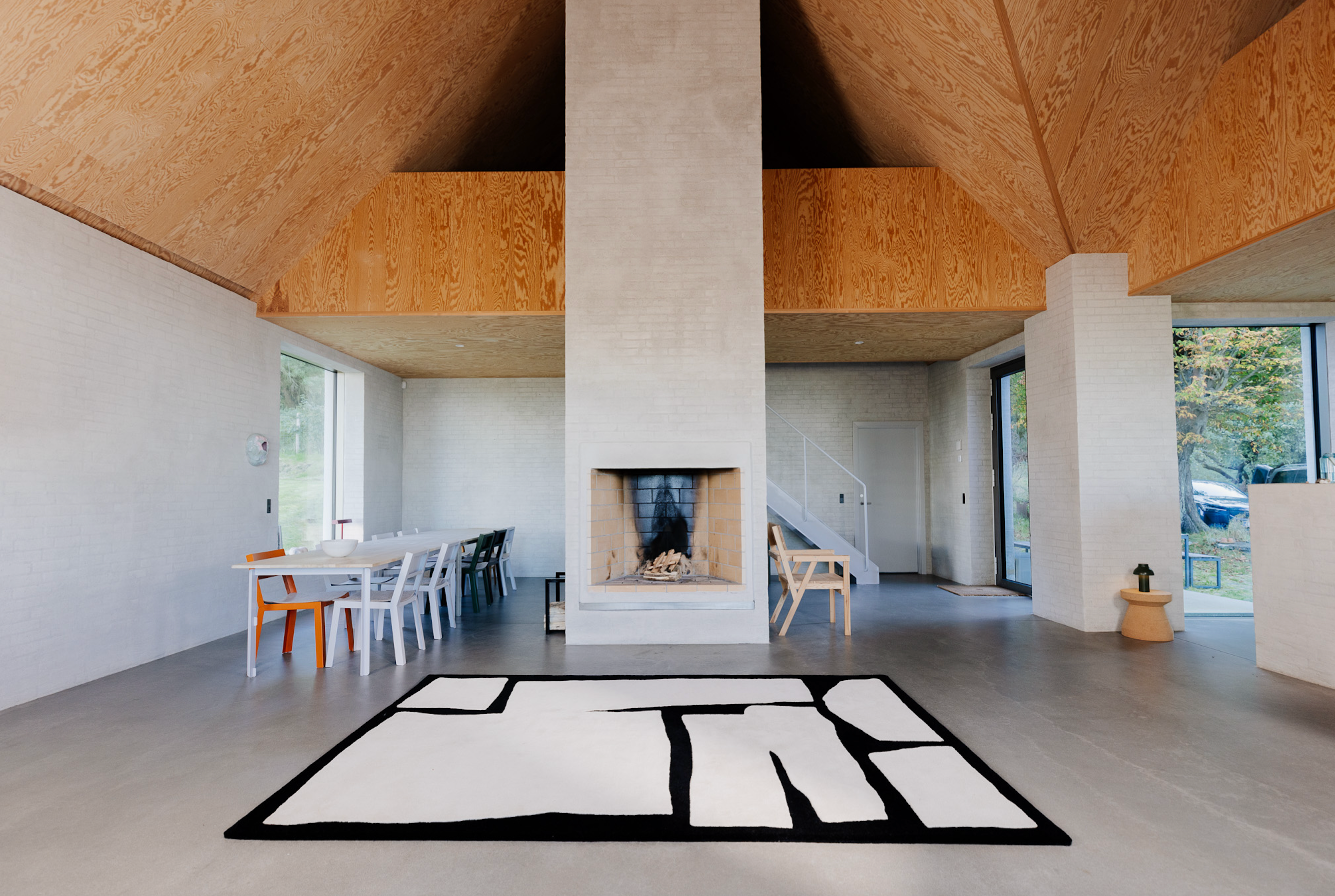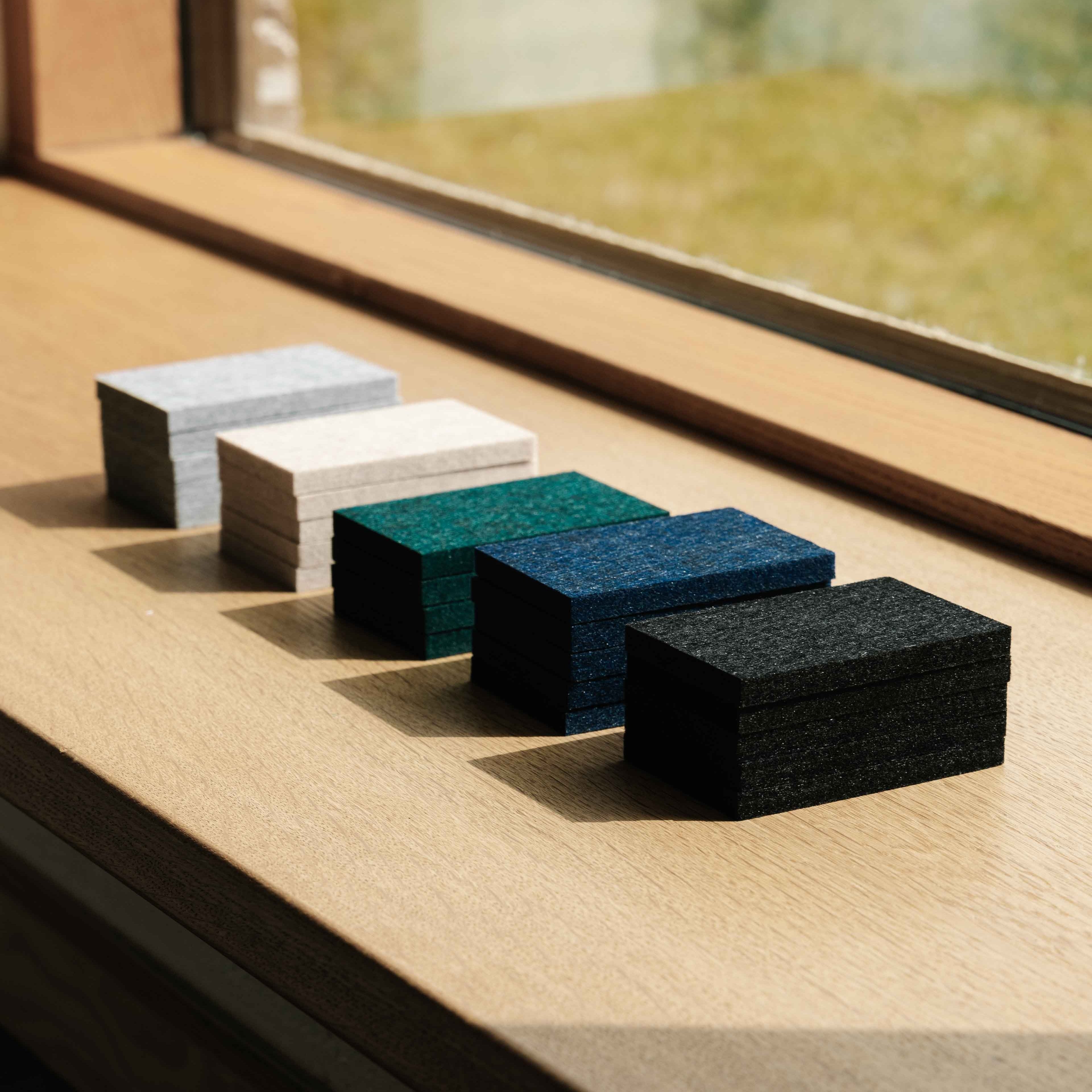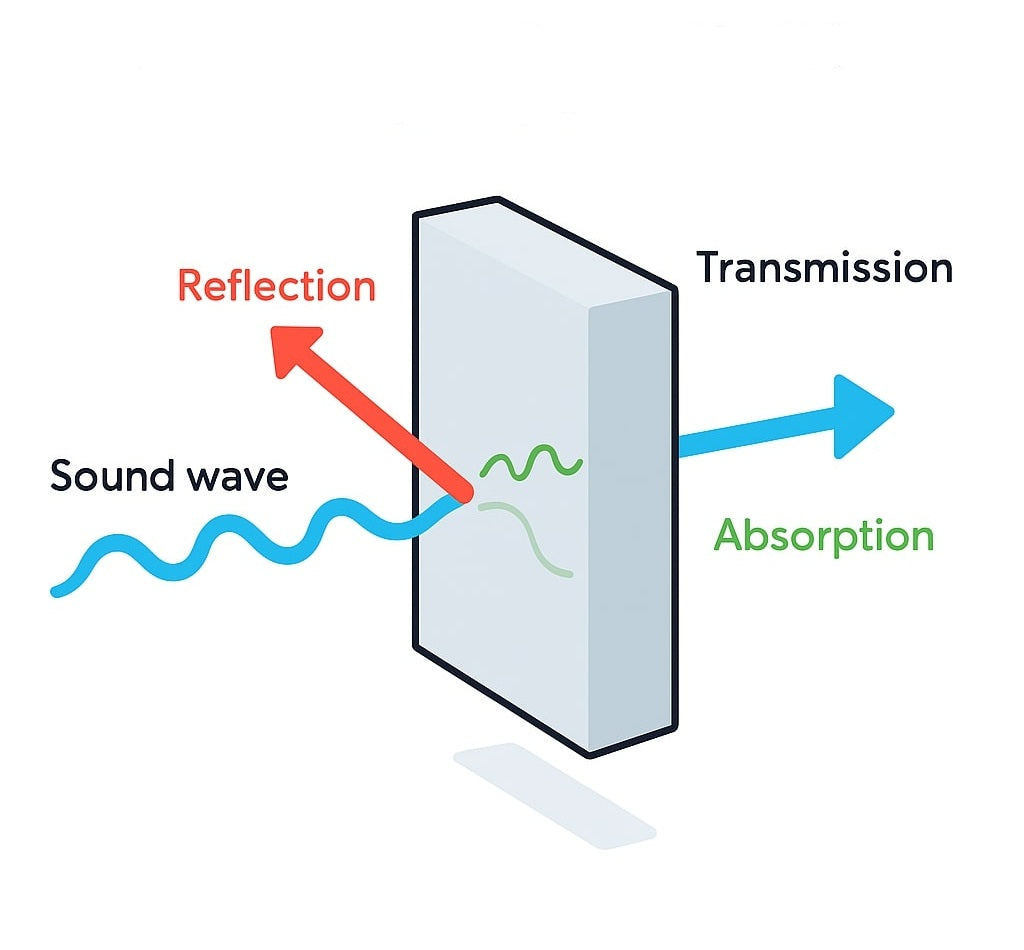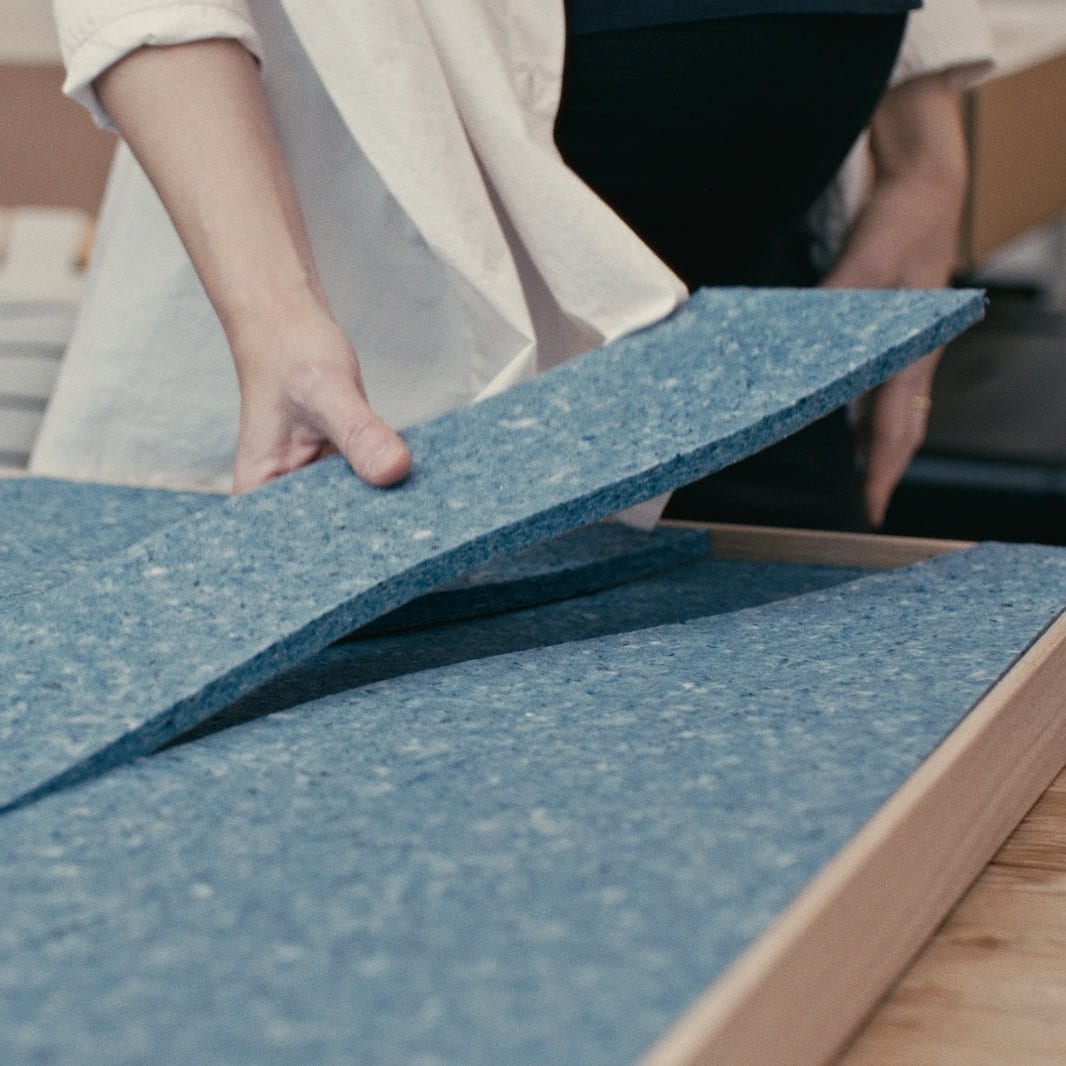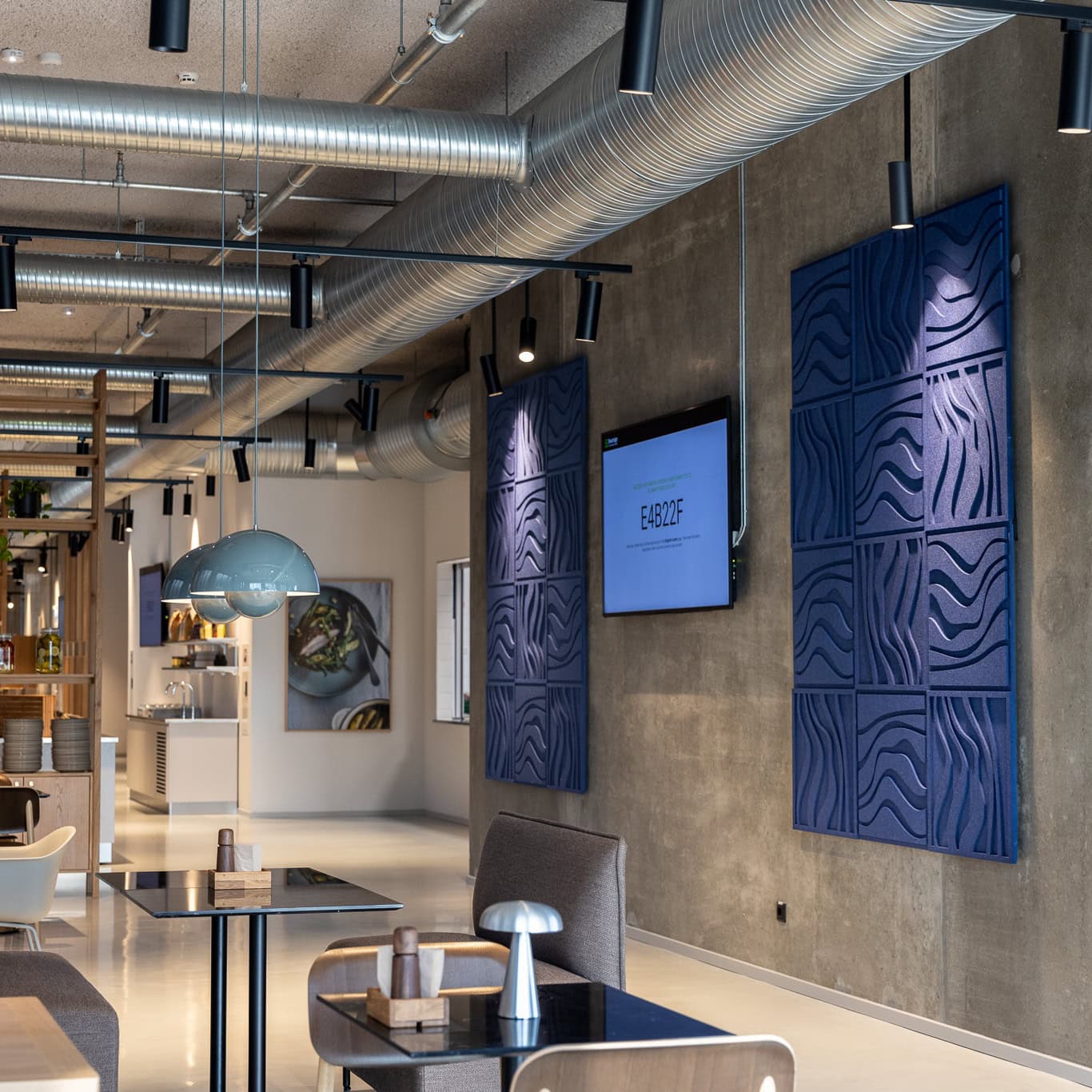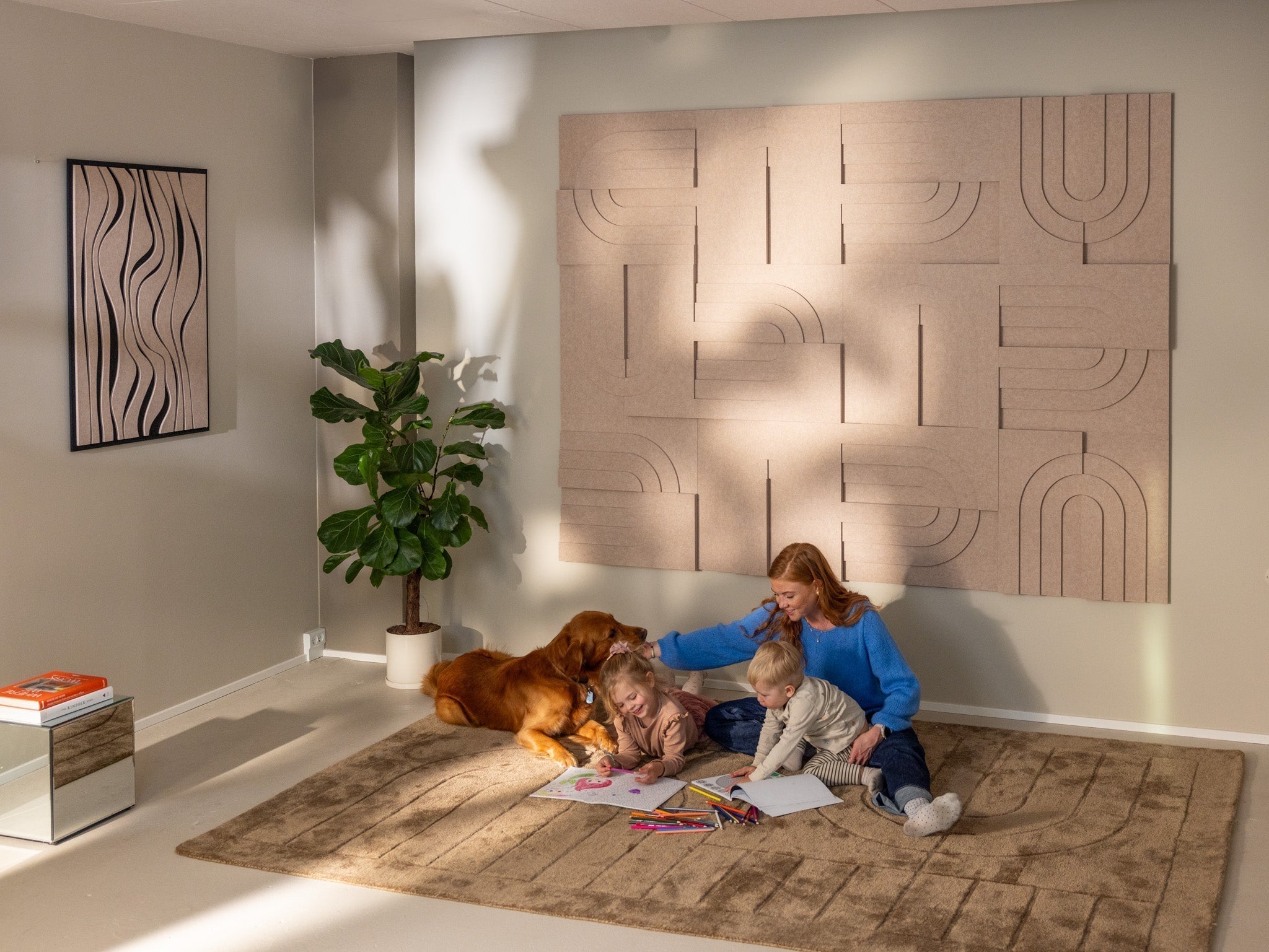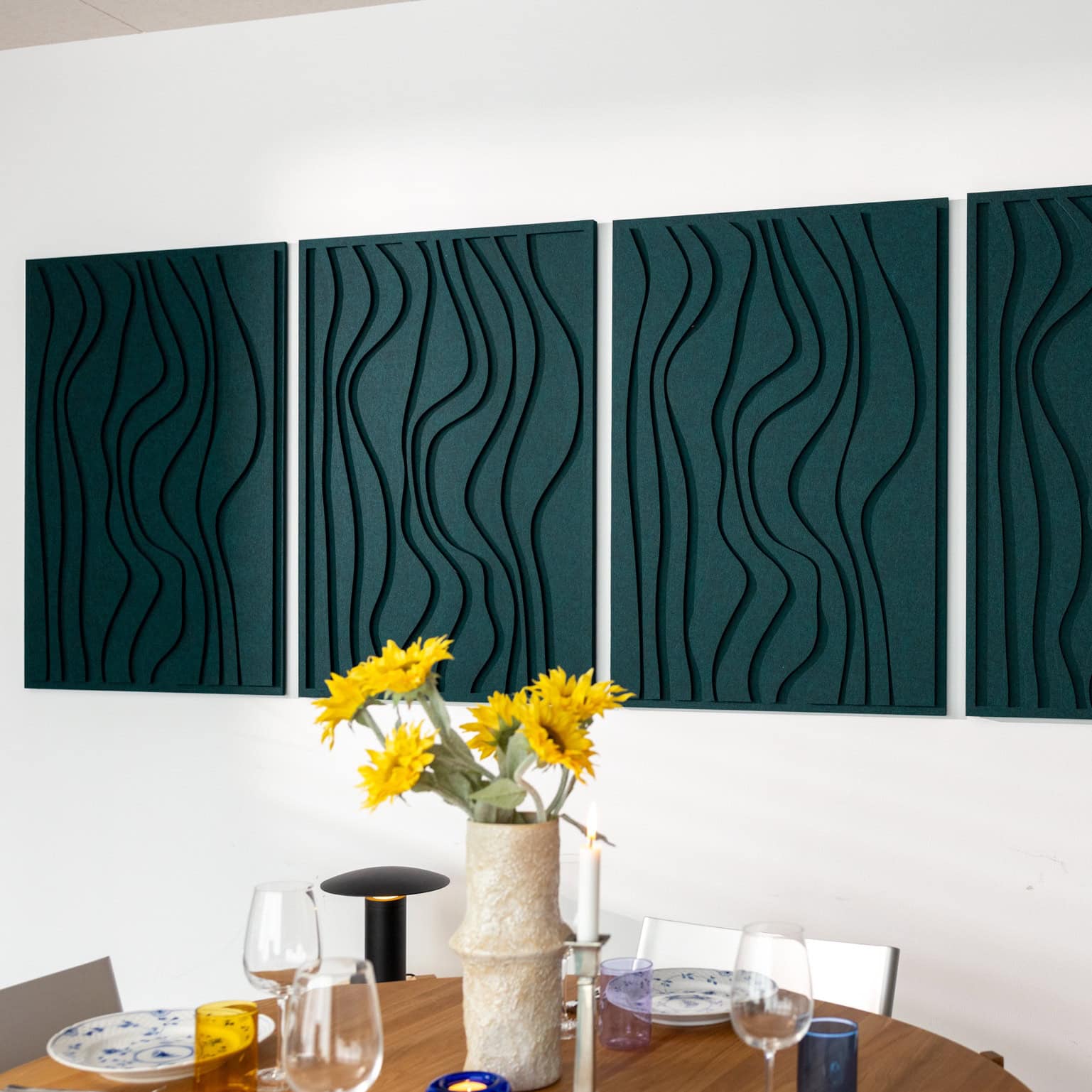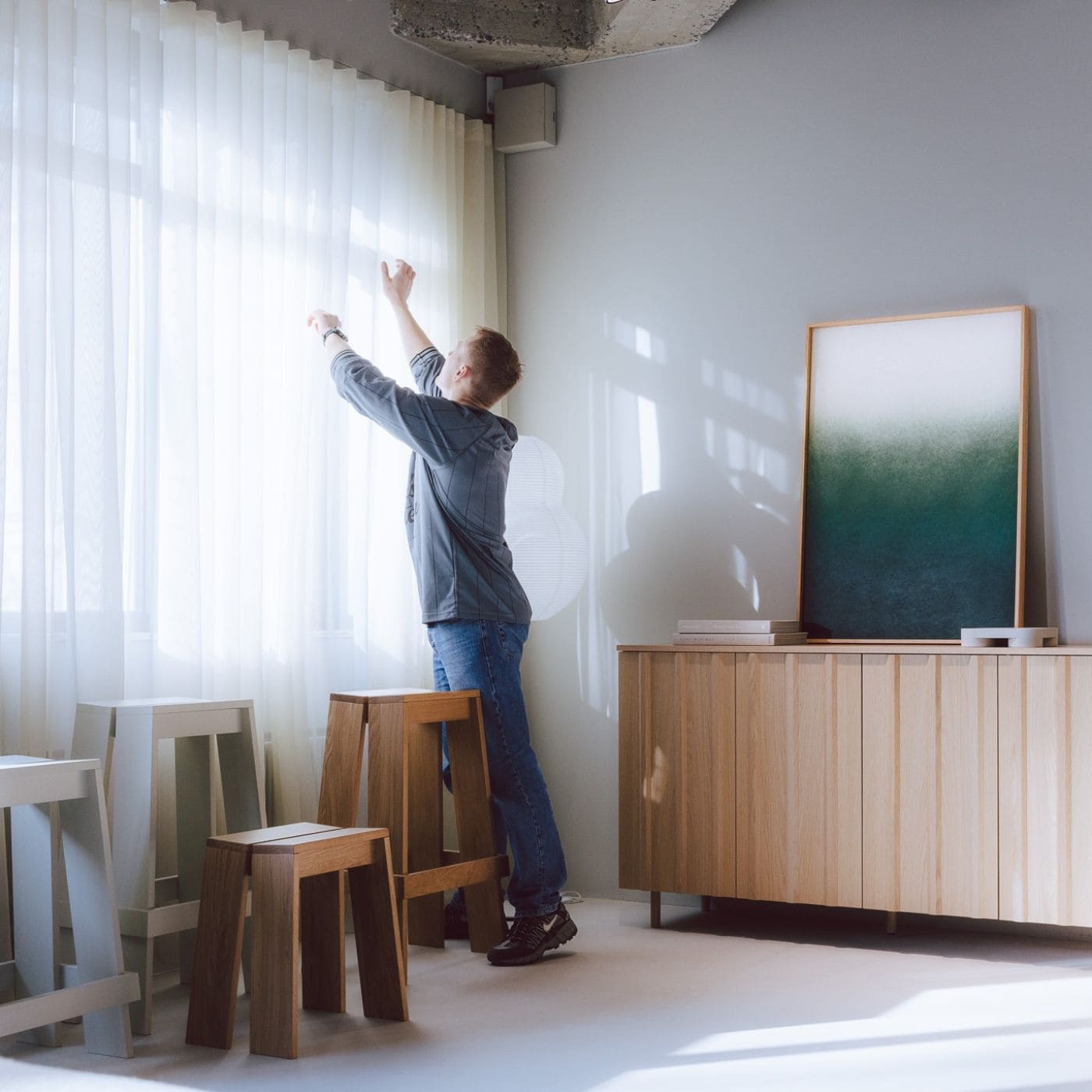Artikel: Akustikpaneler för varje rum
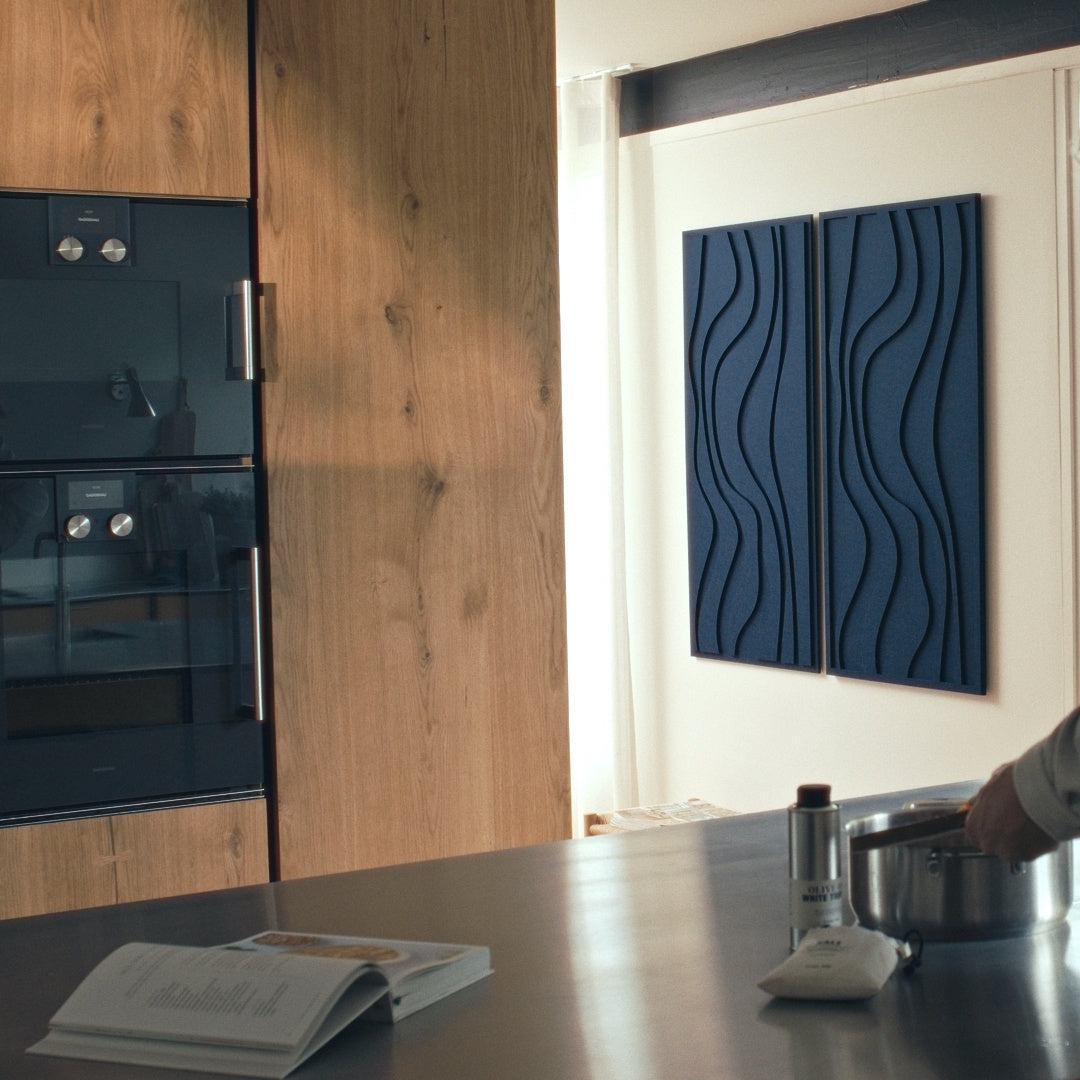
Akustikpaneler för varje rum
När det gäller att skapa en bekväm ljudmiljö i ditt hem är akustikpaneler en mångsidig lösning som kan anpassas för alla typer av rum. Oavsett om det är i badrummet, entrén, köket, kontoret, sovrummet eller vardagsrummet kan akustikpaneler hjälpa till att minska brus och förbättra ljudkvaliteten.
På Arturel erbjuder vi många olika lösningar för att möta dessa olika akustiska utmaningar. För att bättre förstå effekten av förbättrad akustik har vi satt ihop en guide här . Du kan också läsa om alla vetenskapliga tillvägagångssätt för bättre akustik här . Men låt oss fördjupa oss i alla förbättringar i hemmets olika rum.
Akustikpaneler i badrummet - Skapa en oas av lugn
Badrummet är inte bara en plats för personlig vård utan också en fristad där du kan koppla av och ladda. Men om ljudnivån är för hög kan det vara svårt att uppnå önskad känsla av lugn. Det är här akustikpaneler kommer in som en lösning för att skapa en ljudmiljö som stödjer avkoppling och välbefinnande.
När du installerar akustikpaneler i badrummet går du längre än att bara skapa en visuell estetik – du investerar i din personliga ljudkomfort. Dessa paneler är designade för att absorbera ljud från kranar, duschar, toaletter och andra källor, vilket minskar eko och efterklang i rummet. Resultatet är en mer behaglig atmosfär där du kan njuta av ditt bad eller morgonrutin utan distraktioner.
Dessutom kan akustikpaneler också bidra till att förbättra akustiken i mindre badrum, där ljudet tenderar att förstärkas på grund av de begränsade rummets dimensioner. Genom att minska efterklangen kan panelerna skapa en mer balanserad ljudupplevelse, vilket gör det bekvämt att tillbringa tid i badrummet, oavsett om det är för ett avkopplande bad eller förberedelse för dagen. Till detta rum rekommenderar vi definitivt vårt Wave Tile , då det passar bra storleksmässigt och vågorna harmoniserar med det strömmande vattnet i badrummet.

Akustiska paneler i entrén - en välkommen minskning av buller
Entrén fungerar som det första intrycket av ditt hem och är ofta ett område med hög trafik. Den höga aktiviteten kan dock leda till oönskat ljud som kan göra entrén till ditt hem mindre inbjudande. Det är här som akustikpaneler kommer till undsättning med sin förmåga att minska efterklangen och dämpa ljudet av fotsteg, smällande dörrar och röster, vilket skapar en mer fridfull och trevlig atmosfär.
Dessa paneler absorberar ljudvågor och minskar därmed efterklangen i rummet, vilket resulterar i en mer balanserad ljudupplevelse. Resultatet är en välkomnande entré till ditt hem, där ljudet inte överväldigar utan snarare välkomnar med lugn och harmoni.
Dessutom kan akustiska paneler också bidra till att förbättra akustiken i små entréer, där ljud tenderar att förstärkas på grund av de begränsade rummets dimensioner. Genom att minska efterklangen skapar panelerna en bekvämare ljudmiljö, vilket gör det lättare att njuta av ditt hem från det ögonblick du går in genom dörren. Här skulle vi definitivt rekommendera vår Wave Special eller våra hattar och byxor , eftersom de är estetiskt mer välkomnande än andra akustiska verk.


Akustikpaneler i köket - Skapa harmoni i hemmets hjärta
Köket är hemmets hjärta, där ljudet av matlagning, skratt och samtal ofta smälter samman till en livlig symfoni. Men denna harmoni kan ibland överskuggas av överdrivet brus, vilket gör det svårt att koncentrera sig och njuta av stunden. Det är här akustikpaneler kommer in i bilden som en livräddare.
Genom att montera akustikpaneler på kökets väggar kan du skapa en bekvämare atmosfär där ljudet av matlagning och samtal dämpas och efterklangen minskar. Dessa paneler fungerar genom att absorbera ljudvågor och förhindra att de reflekteras runt i rummet, vilket resulterar i en mer balanserad ljudupplevelse.
De reducerade ljudnivåerna skapar en mer avkopplande atmosfär där du bättre kan koncentrera dig på matlagningen och njuta av måltider med familj och vänner utan onödiga distraktioner. För detta rum skulle vår Geometric-serie vara perfekt, eftersom den matchar de rundade kanterna i köket, såväl som grytor, stekpannor och andra köksredskap.

Akustikpaneler på kontoret - Förbättra produktiviteten
På ett hemmakontor, där fokus och koncentration är nyckelelement för ett effektivt arbete, kan ljudmiljön ha en avgörande inverkan på din produktivitet och ditt välbefinnande. Det kan du läsa mycket mer om här . Akustikpaneler spelar en avgörande roll för att skapa den idealiska ljudmiljön som främjar fokus och kreativitet genom att minska brus och förbättra ljudkvaliteten.
Genom att installera akustikpaneler på ditt hemmakontor kan du skapa en bekvämare och mer produktiv arbetsyta genom att minimera bakgrundsljud och efterklang. Dessa paneler absorberar ljudvågor och förhindrar att de reflekteras runt i rummet, vilket resulterar i en mer balanserad och behaglig ljudupplevelse.
Det minskade bruset gör det lättare att koncentrera sig på uppgifter och minskar distraherande element som kan påverka ditt arbetsflöde negativt. Här skulle vi definitivt rekommendera vår Arch-serie , eftersom den låter dig skapa en sammanhållen mosaik utan att det visuella dominerar jämfört med koncentrationen.

Akustikpaneler i sovrummet - Skapa en lugnande atmosfär
När det kommer till sovrummet är det viktigt att skapa en atmosfär som främjar lugn och avkoppling för en god natts sömn. Akustikpaneler kan vara en avgörande faktor för att skapa denna önskade miljö genom att minska brus och förbättra ljudkvaliteten i rummet.
Genom att installera akustikpaneler i sovrummet kan du minimera störande ljud som kan störa din sömnkvalitet, såsom trafikljud, ljud från närliggande lägenheter eller allmänt bakgrundsljud. Dessa paneler absorberar ljudvågor och förhindrar att de reflekteras runt i rummet, vilket resulterar i en mer dämpad och fridfull ljudupplevelse.
Den minskade efterklangen gör det lättare att somna och stanna i en djup sömn hela natten, eftersom ljuden inte förstärks eller förvrängs av rummets akustik. Detta skapar en lugnande atmosfär som är idealisk för att koppla av och vila både mentalt och fysiskt. Här skulle vi rekommendera antingen vår Wave Long-serie i havsblått eller petroleumgrönt för att ge en lugn atmosfär. Dessutom skulle vår Arch Kvadrat Really X Arturel också passa in om du vill hänga dem som fristående delar i rummet, inte direkt ovanför sängen.

Akustikpaneler i vardagsrummet - Optimera ljudkvaliteten
Vardagsrummet är ofta hemmets hjärta, där familj och vänner samlas för att koppla av, titta på film eller njuta av mysiga samvaro. I sådana livliga miljöer kan buller snabbt ackumuleras och skapa en mindre trevlig atmosfär. Det är här akustikpanelerna kommer till sin rätt eftersom de kan vara ett värdefullt tillskott för att förbättra ljudkvaliteten och skapa ett mer inbjudande vardagsrum.
Akustiska paneler kan effektivt absorbera ljud från konversationer, TV-ljud och musik, vilket minskar efterklang och minimerar onödigt brus. Genom att installera dessa paneler på väggarna i vardagsrummet kan du skapa en bekvämare akustisk miljö där alla kan njuta av varandras sällskap utan att störas av överdrivet ljud.
Här vill vi särskilt lyfta fram vår Wave Original , eftersom de erbjuder en subtil och raffinerad estetik utan att stjäla rampljuset från resten av rummet. Dessutom är deras storlek perfekt för de flesta vardagsrum.


